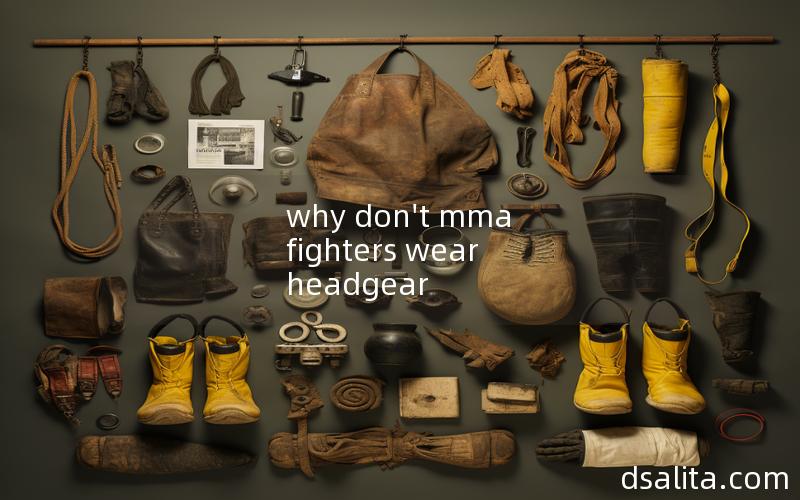Why Don’t MMA Fighters Wear Headgear?
When it comes to mixed martial arts (MMA), one question that often arises is why fighters do not wear headgear. While headgear is commonly used in other combat sports like boxing and kickboxing, MMA fighters opt to go without it. This decision is influenced by a variety of factors that encompass safety concerns, rules and regulations, performance, and tradition.
Safety Concerns
One of the main reasons why MMA fighters do not wear headgear is safety concerns. Contrary to popular belief, studies have shown that headgear does not necessarily reduce the risk of concussions or other head injuries. In fact, headgear can sometimes give fighters a false sense of security, leading to more reckless behavior and increased risk of injury.
Additionally, headgear can impair vision and obstruct peripheral vision, making it difficult for fighters to see strikes and react accordingly. This limitation can potentially increase the likelihood of accidental eye pokes or other unintended injuries.
Rules and Regulations
Another factor that explains the absence of headgear in MMA is the rules and regulations set by governing bodies. Organizations like the Ultimate Fighting Championship (UFC) and the International Mixed Martial Arts Federation (IMMAF) have specific guidelines regarding the use of protective gear. These regulations focus on ensuring fair competition while maintaining the safety of the fighters.

While gloves are mandatory in MMA fights to protect the hands and reduce the risk of facial cuts, headgear is not required. The absence of headgear allows for more natural movement and strikes, promoting a more authentic and dynamic fighting experience.
Performance
MMA fighters choose not to wear headgear because it can affect their performance. Headgear can alter the fighter’s perception of distance, making it harder to accurately judge the range for strikes and takedowns. It can also hinder the fighter’s ability to hear their opponent’s breathing and movements, which are crucial cues for anticipating attacks and defending against them.
Furthermore, headgear can increase the heat and discomfort experienced by fighters during a match. The added weight and restricted airflow can lead to fatigue and hinder their performance, especially during longer fights.
Tradition
Lastly, the absence of headgear in MMA is rooted in tradition. The sport draws its roots from various martial arts disciplines, many of which do not incorporate headgear. MMA aims to showcase the skills and techniques from different combat styles, and the lack of headgear contributes to the raw and authentic nature of the sport.
Moreover, the absence of headgear adds an element of danger and excitement for both fighters and spectators. It heightens the intensity and showcases the true grit and determination of the competitors.
Conclusion
In conclusion, the decision for MMA fighters not to wear headgear is multi-faceted. Safety concerns, rules and regulations, performance considerations, and the desire to maintain tradition all play a role in this choice. While headgear may seem like an obvious safety measure, its absence in MMA is a deliberate decision aimed at enhancing the sport’s authenticity and promoting fair competition.

 Dsalita Boxing
Dsalita Boxing






